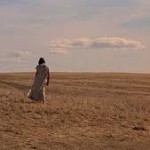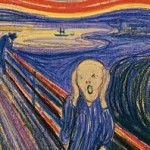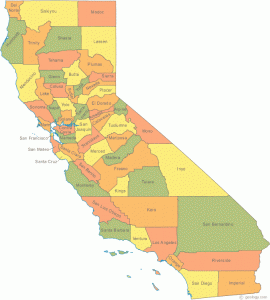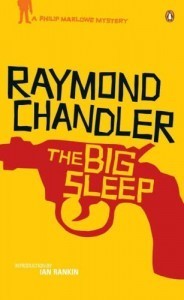Janice Steinberg's Blog, page 5
March 19, 2013
7 Rules To Write By – #2: Do the Work
My last blog was about Rule #1: Go toward what scares you. The second of my 7 Rules to Write By has to do with the Muse.
Click here to view the embedded video.
Some people wait for the Muse to show up. Albert Brooks, for instance, in the film The Muse. He’s a film writer who’s lost his edge, but fortunately a friend happens to know the Muse, and she’s available. In this clip, he gets a call from the Muse (Sharon Stone), who happens to be a very high-maintenance source of inspiration. Maybe you already know better than to wait for inspiration. You know you have to put your butt in the chair. But do you still engage in Muse-ical thinking? I did. I used to believe I couldn’t do the kind of sustained work required for a novel unless the time ahead of me was like the shots of the prairie in Days of Heaven: immense, stretching forever, plus it wouldn’t hurt to have Richard Gere around. (This Muse thing is putting me in a filmic mood.)
Maybe you already know better than to wait for inspiration. You know you have to put your butt in the chair. But do you still engage in Muse-ical thinking? I did. I used to believe I couldn’t do the kind of sustained work required for a novel unless the time ahead of me was like the shots of the prairie in Days of Heaven: immense, stretching forever, plus it wouldn’t hurt to have Richard Gere around. (This Muse thing is putting me in a filmic mood.)
In prosaic terms, I figured I needed four hours a day for, say, three years. But, at the time I was contemplating doing the project that scared me, I was juggling newspaper assignments and teaching gigs–all with deadlines, so clearly they were important and non-negotiable. I’d just have to wait till my schedule got less clogged, I thought with relief. Then my friend Sara Lewis Murre said that was b.s. Sara is the author of warm, funny novels, and, in recent years, she’s also become a hypnotherapist and creativity coach, a job she was born to do. Sara pushed me to start working on the novel, and she made a suggestion so simple I was sure it couldn’t work: Use a timer, and try to write for just an hour a day.
I doubted I could do more than warm up my engines in only an hour, but what the heck–I had a timer, a basic West Bend kitchen variety. I set it for an hour, two hours if I could, but sometimes just for 20 minutes. Like a factory worker, I was on the clock. If I got up to use the bathroom, I stopped the timer. If I checked e-mail, I stopped the timer. I found out that, for the way I work, I needed to do my novel-writing first thing in the morning. If I used that time for a newspaper article and told myself I’d work on the novel later, it didn’t happen. But the timer trick worked. With the continuity of working on the book almost daily, I did write page after page–or, at the glacial rate at which I produce, at least word after word. And the words finally added up to a 120,000-word novel.
Your best writing time may be after midnight. Or maybe it works for you to produce x number of pages a day. The crucial thing is to consciously carve out the time to write, instead of waiting for the Muse.
RULE 2: Do the work. Do it now, in the midst of your full, messy, wonderful life.
March 7, 2013
7 Rules To Write By – #1: Go toward what scares you
 Hi, writers. This blog post is for you–or really, for anyone who takes the risk of following their artistic vision and putting it out into the world. I recently gave a talk at the Southern California Writers Conference in San Diego that I called 7 Rules to Write By. Here’s Rule 1. I’ll cover the rest in subsequent posts.
Hi, writers. This blog post is for you–or really, for anyone who takes the risk of following their artistic vision and putting it out into the world. I recently gave a talk at the Southern California Writers Conference in San Diego that I called 7 Rules to Write By. Here’s Rule 1. I’ll cover the rest in subsequent posts.
I described my talk as part memoir, part how-to, and part fairy tale, and this rule (like most of them) starts with memoir. Every writer has rejection stories. But I have one of the worst. Seriously. After having five paperback mystery novels published in the 1990s, I wrote my breakthrough book, a thriller. My agent loved it so much that when she sent it to editors, she immediately scheduled an auction. That means she set a date on which they all had to tell her what a whopping big advance they were going to offer, and then she’d go back and forth among them and see who’d ultimately come up with the most whopping of all. On the day of the auction, I got up early– when it’s 6 a.m. in San Diego, New York editors are already at work. I even dressed up a bit to go into my office next to the bedroom. You can tell what’s coming, right? We held an auction, and nobody bid. Nor, over the next several months, as she took the book to a number of other publishers, was she able to sell it.
This is where I’m supposed to say how plucky I was, that I picked myself right up and started a new novel. Uh-uh. I was so heartbroken I decided to stop being a novelist. I got into dance journalism and into teaching writing, both of which I genuinely enjoyed. Ah, but after a few years, I missed the total immersion that comes with working on a novel. And I’d had an idea simmering in my mind. I’d been fascinated by a minor character in The Big Sleep, and I wanted to tell her story. There was only one problem. I saw this book as a departure from the genre fiction I’d done in the past, and it scared the bejeezus out of me. As I wrote in a note to myself at the time: This feels to me like a potentially BIG book. Way too big for me even to risk.
Which leads to…
RULE 1: Go toward what scares you.
It’s what will challenge you and make you grow as a writer (and probably as a person, too), and it will bring out your most meaningful work.
February 5, 2013
Djewess Unchained: ProsenPeople blogs

Book launch at Warwick’s 1/29
I’ve been blogging up a storm, writing four posts for last week’s stint as guest blogger for The ProsenPeople, a project of the Jewish Book Council and the Jewish Daily Forward. You can link to them here:
The Beauty of Broken English - I thought I’d entered completely into the world of my novel, until I got questions from Tony, who directed the Tin Horse audiobook.
Hearing the Women’s Songs – in Torah and in the Big Sleep - what it means to me to give voice to a woman in the shadows of another tale.
Djewess Unchained – are some words beyond reclamation?
The Last Jew of Boyle Heights – Boyle Heights in the 1920s and 30s, the setting for The Tin Horse, was once the Jewish neighborhood in Los Angeles. A few weeks ago, Eddie Goldstein, who was born in Boyle Heights and lived there all his life, passed away. He was known as the last Jew of Boyle Heights.
January 25, 2013
5 Remedies for Pre-Release Jitters
1. Go to a Day of Mindfulness at Deer Park Monastery. Do an hour-long walking meditation. Sing sweet, cheery songs with hand gestures led by beaming Buddhist monks and nuns.
2. Feel absurdly comforted by reading, in Roberto Bolaño’s novel 2666:
“Ivanov’s fear was of a literary nature. That is, it was the fear that afflicts most citizens who, one fine (or dark) day, choose to make the practice of writing, and especially the practice of fiction writing, an integral part of their lives. Fear of being no good. Also, fear of being overlooked, But, above all, fear of being no good. Fear that one’s efforts and striving will come to nothing. Fear of the step that leaves no trace. Fear of the forces of chance and nature that wipe away shallow prints. Fear of dining alone and unnoticed. Fear of going unrecognized. Fear of failure and making a spectacle of oneself. But, above all, fear of being no good.”
Put a pink post-it on this page and read it daily to remember you are not alone.
3. Distract yourself with Scrabble. Make redbait and get a five-point bonus for word of game.
4. Smile as you read “In the Dairy Case, Ripe Prose,” a New York Times piece about cheesemongers‘ imaginative descriptions  of their wares. Here’s a favorite, from Steve Jenkins at Fairway Market, writing about a cheese called Queijo de Serpa: “It is still made only at night, I am led to believe, as it was when I last visited the cheesemaker, and what I haven’t told you is Serpa’s texture and flavor are like sex. There’s just no other way to describe the effect this cheese has on me. Even though I barely remember sex.” I also love the photos of Jenkins in embrace-the-world poses as he talks about cheese.
of their wares. Here’s a favorite, from Steve Jenkins at Fairway Market, writing about a cheese called Queijo de Serpa: “It is still made only at night, I am led to believe, as it was when I last visited the cheesemaker, and what I haven’t told you is Serpa’s texture and flavor are like sex. There’s just no other way to describe the effect this cheese has on me. Even though I barely remember sex.” I also love the photos of Jenkins in embrace-the-world poses as he talks about cheese.
5. Find some Queijo de Serpa and eat it! (Haven’t done this yet. Maybe if I had, I wouldn’t have woken up at 4:30 this morning.)
December 17, 2012
Literary L.A. – and no, that is not an oxymoron!
The Sunday L.A. Times carried an article by Hector Tobar that made this Southern California writer put down her cup of green tea and look for a barricade to storm. Tobar wrote about a New York Daily News blogger’s snarky response to hearing that Eloise Klein Healy was named poet laureate of Los Angeles.
 All of the L.A.-bashing came from one blogger, Christopher Young, and I might have dismissed his jibes as just one writer grasping for a way to sound clever and superior, except that I ran into the same attitude at the Institute for Dance Criticism, a workshop held at the American Dance Festival, in 2004. One of the pieces we saw, by NY choreographer John Jasperse, was called “California,” and when we discussed it, I discovered that just about everyone but me got it that “California” was shorthand for everything shallow, vapid, and materialistic in contemporary culture. Huh? I, on the other hand, was the only person who recognized that a large hanging sculpture that was the major feature of the set looked like a map of California turned on its side. (You can turn your laptop on its side to get a sense of what the sculpture looked like.)
All of the L.A.-bashing came from one blogger, Christopher Young, and I might have dismissed his jibes as just one writer grasping for a way to sound clever and superior, except that I ran into the same attitude at the Institute for Dance Criticism, a workshop held at the American Dance Festival, in 2004. One of the pieces we saw, by NY choreographer John Jasperse, was called “California,” and when we discussed it, I discovered that just about everyone but me got it that “California” was shorthand for everything shallow, vapid, and materialistic in contemporary culture. Huh? I, on the other hand, was the only person who recognized that a large hanging sculpture that was the major feature of the set looked like a map of California turned on its side. (You can turn your laptop on its side to get a sense of what the sculpture looked like.)
Tobar mentions Didion, Fitzgerald, and Brecht as a few of the major writers who’ve called Los Angeles home. For me, beyond the legion of brilliant writers who have lived in the lower left corner of the country, there is something wonderful about L.A. as literary setting. L.A. can gleam in the sun as if it were created yesterday, as if it were free of history–an illusion, of course, and an invitation to go beneath the shiny surface and tell the real stories.
November 5, 2012
Where do you get your ideas?
 I’ve heard authors say that their least-favorite question is “Where do you get your ideas?” Not me. For one thing, I am not one of those writers who keeps a file box (or the electronic equivalent) bulging with ideas, so that the minute I finish one project, there are 18 others – all brilliant, of course – clamoring for my attention. Book ideas come to me one at a time, and when they show up, I notice. I always feel like raising a flag and doing a few Rockette kicks when a new one appears.
I’ve heard authors say that their least-favorite question is “Where do you get your ideas?” Not me. For one thing, I am not one of those writers who keeps a file box (or the electronic equivalent) bulging with ideas, so that the minute I finish one project, there are 18 others – all brilliant, of course – clamoring for my attention. Book ideas come to me one at a time, and when they show up, I notice. I always feel like raising a flag and doing a few Rockette kicks when a new one appears.
Plus, in the case of “The Tin Horse,” I love telling the story of how the light bulb came on in my head. In a terrific New Yorker article about women readers, Joan Acocella writes about “watershed books” that get you through a rough time. In a survey of Brits mentioned in the article, their hard-time books were lit-class fare like “Pride and Prejudice” and “One Hundred Years of Solitude.” My watersheds were the (equally literary, IMHO) noir mystery novels of Raymond Chandler and Dashiell Hammett, which I read and reread during a time when I felt a deep need to identify with protagonists who were tough and fearless.
Alas, reading noir fiction did not make me tough or fearless. In those stories of hard-boiled men and fast women, I found just one character with whom I identified in any meaningful way: an unnamed woman in Chandler’s “The Big Sleep.” Philip Marlowe, the detective, wants information about a sleazy Hollywood bookseller. He goes to a legitimate bookstore nearby, flashes a badge at the woman working there, and starts asking questions. And she and Marlowe engage in this crisp intellectual parrying in which she gives as good as she gets. BTW, don’t expect to find this in the film, in which she’s just one more fast woman who happens to wear glasses.
In the novel, the woman is reading a law book, which is pretty intriguing given that “The Big Sleep” was published in 1939. But what really grabbed me was the way Chandler introduced her: ”She had the fine-drawn face of an intelligent Jewess.” That word, Jewess, suggested an irremediable otherness. And it made me want to know about this nameless woman. What was her story? What was her Los Angeles?
Eventually, I gave the woman a name: Elaine Greenstein. And a Los Angeles: Boyle Heights. And a story: “The Tin Horse.”




